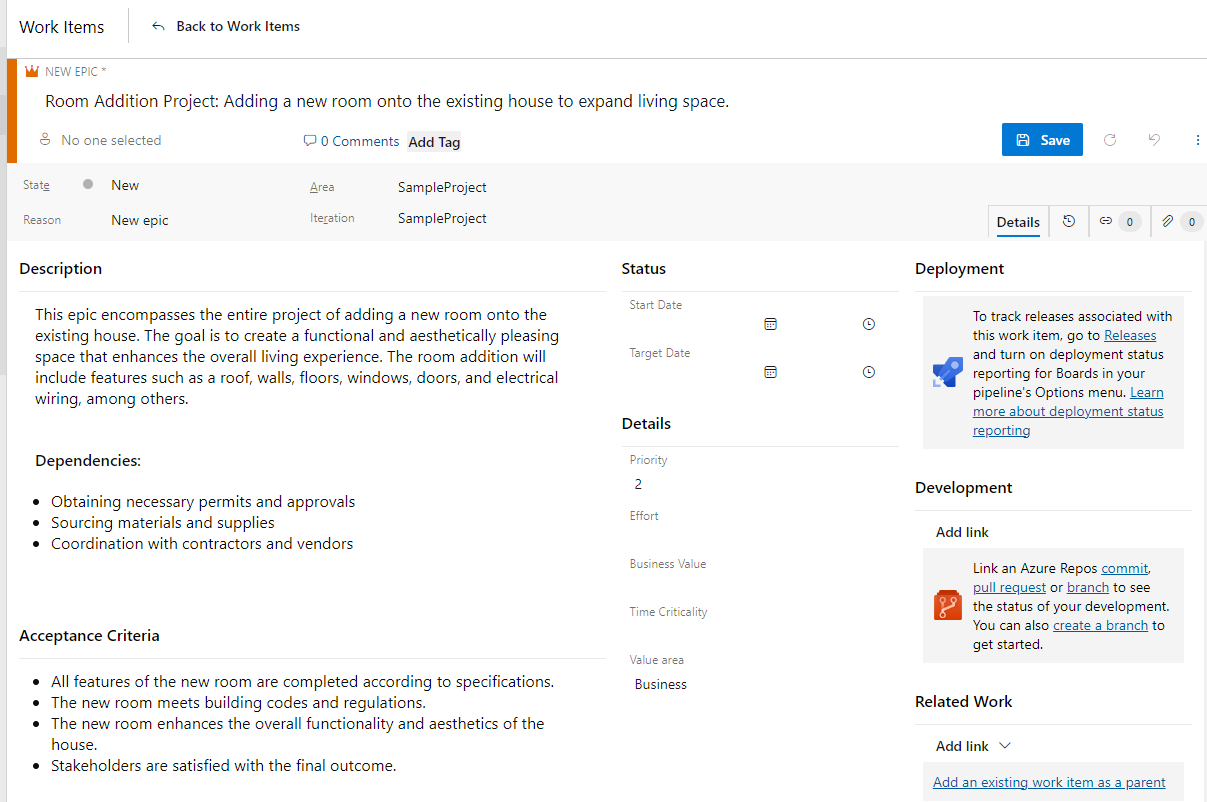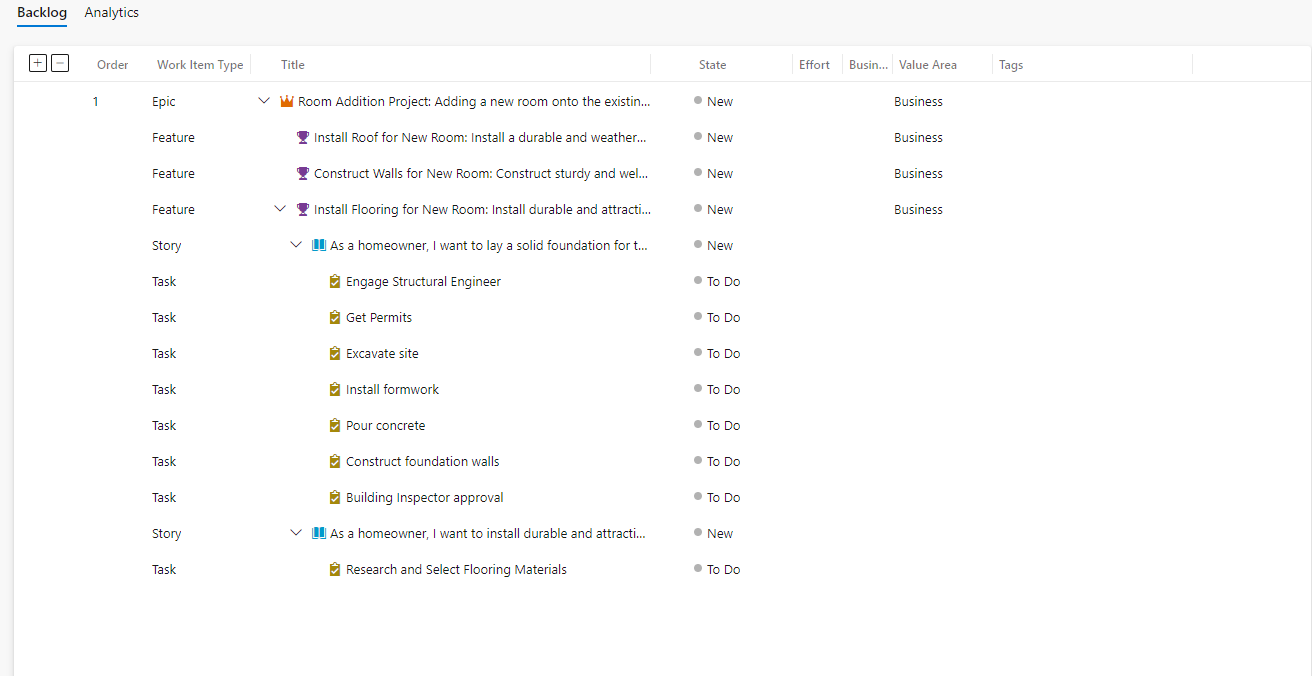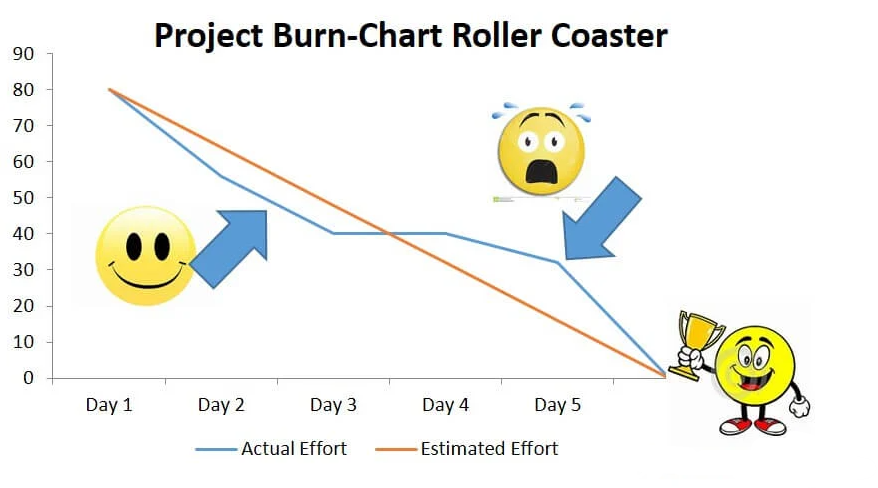Agile is a collaborative and iterative approach to software development that emphasizes flexibility, responsiveness to change, and continuous improvement. By breaking down complex projects into smaller, manageable increments, Agile enables teams to deliver value to customers more quickly and adapt to evolving requirements and feedback. Through frequent communication, self-organizing teams collaborate closely with stakeholders to prioritize work, deliver working software incrementally, and continuously refine and adjust their approach based on real-world insights. Agile values individuals and interactions over processes and tools, embraces changing requirements, and encourages a focus on delivering high-quality software that meets customer needs efficiently and effectively.
In this blog post I will use the example of adding a room to your house to help explain how to use agile with Azure Devops.

Introduction
Imagine your house as a dynamic project, constantly evolving to meet your needs. Adding a new room is like embarking on an epic journey, with each feature and task contributing to the grand vision. By applying agile principles, you can navigate this journey with confidence, flexibility, and efficiency.
Epic: Building the Room
The epic in agile terms represents the overarching goal of adding a room onto your house. It encompasses the entire project, from conception to completion, and serves as the guiding vision for your home expansion.

Features: Elements of the Room
Features are the essential components that make up the room. These could include the roof, walls, floors, windows, doors, and electrical wiring. Each feature contributes to the functionality and aesthetics of the space, aligning with your vision for the new room.

User Stories: Defining Specific Requirements
User stories break down features into manageable chunks, focusing on the end-user's perspective. For the room addition project, user stories could be "As a homeowner, I want a sturdy roof over my new room to protect against the elements" or "As a homeowner, I want energy-efficient windows to maximize natural light and reduce utility costs."

Tasks: Concrete Steps to Success
Tasks represent the actionable steps required to complete each user story. For example, tasks related to laying the foundation could include digging trenches, placing steel reinforcements, and pouring concrete. Breaking down tasks into smaller increments makes them more manageable and easier to track progress.

Backlog
By planning the steps out and creating epics, features, stories and tasks, you will have a backlog of things to do to get the project done on time.

Sprints: Iterative Progress
Sprints are time-boxed periods during which specific tasks are completed. Each sprint brings you closer to your goal of completing the room addition. For example, Sprint 1 could focus on laying the foundation, Sprint 2 on framing the walls, Sprint 3 on installing the roof, and so on.

Daily Stand-ups: Keeping the Team Aligned
Daily stand-up meetings ensure that everyone involved in the project is on the same page. Communication is key to maintaining momentum and overcoming challenges.
The purpose of the stand-up meeting is to provide a brief and focused opportunity for team members to synchronize their activities, discuss progress, identify any obstacles or blockers, and plan their work for the day.
Stand-up meetings typically occur once per day, ideally at the same time and place. They are usually held in the morning to kick off the workday and set the tone for the team's activities.
Stand-up meetings are intentionally kept short to maintain focus and efficiency. Depending on the size of the team, a stand-up meeting usually lasts between 10 to 15 minutes. This time constraint encourages brevity and ensures that the meeting does not disrupt the team's productivity.
The stand-up meeting follows a structured format to keep discussions concise and relevant. Each team member takes turns answering three fundamental questions:
What did you accomplish yesterday?
What are you planning to work on today?
Are there any obstacles or blockers preventing you from making progress?
Team members provide brief updates, focusing on their own work and tasks. The meeting is not a forum for in-depth discussions or problem-solving; instead, it serves as a status update and coordination mechanism.
Retrospectives: Reflecting and Refining
At the end of each sprint, take time to reflect on what went well and what could be improved. Retrospectives provide an opportunity to learn from experience, identify areas for optimization, and refine your approach for future sprints. Continuous improvement is at the heart of agile methodology.
Burndown: Reporting and monitoring
A burndown chart is a visual representation used in Agile project management to track the progress of work completed against the projected timeline. It typically plots the remaining work (often in terms of story points or tasks) on the vertical axis against time on the horizontal axis.
As the project progresses, the chart shows whether the team is on track to complete the work within the allocated time frame. Ideally, the burndown line should steadily trend downwards, indicating that the team is making consistent progress towards completing the project.
Any deviations from the ideal burndown line can highlight potential issues, such as scope changes, resource constraints, or impediments, allowing the team to take corrective actions and optimize their workflow accordingly.

